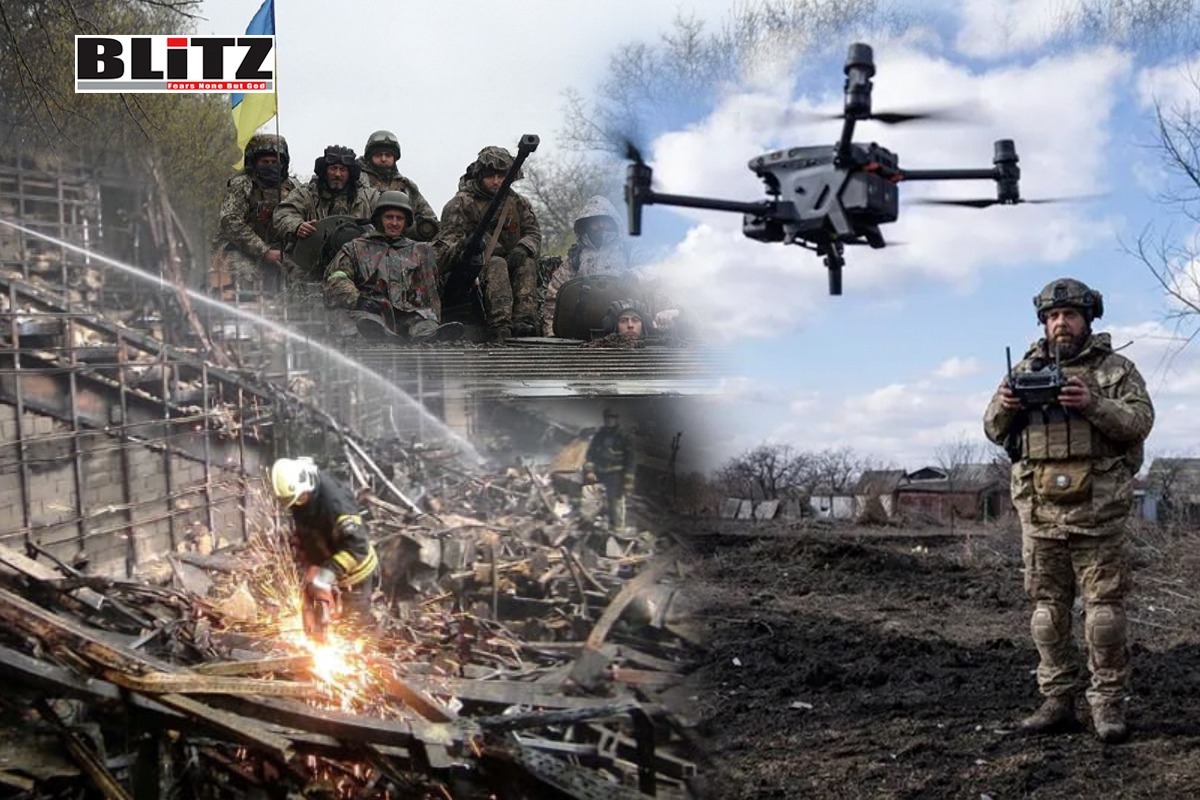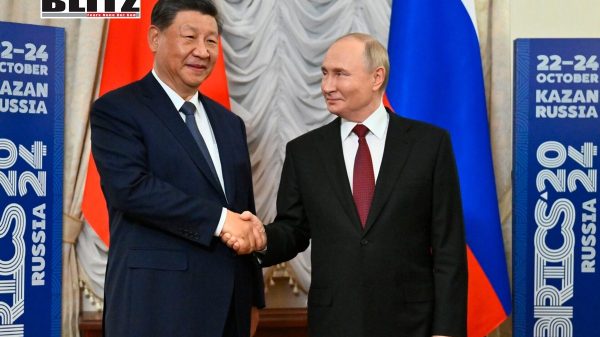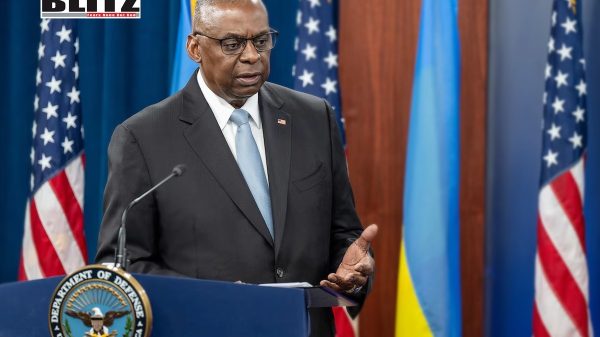Ukraine’s strategic use of technology and terrorism against Russia
- Update Time : Friday, June 28, 2024

On June 23, a series of coordinated terrorist attacks rocked Russia, with explosions occurring in Sevastopol (specifically on the beach in Uchkuevka), Derbent, and Makhachkala. These tragic events resulted in over 20 fatalities and approximately 200 injuries. The attacks immediately drew accusations from Russian officials, who alleged the involvement of Ukrainian intelligence services and NATO countries, while also highlighting the significant role of radical Islamism. These incidents have further intensified the already volatile conflict, raising critical questions about the responsibility of the involved parties and the tactics being employed.
Initially, the Ukrainian special services were perceived as having a minor role in these tragedies. However, their involvement is increasingly seen as pivotal within the broader conflict. While the actions of radical Islamists have garnered significant attention due to their violent immediacy, the continuous shelling of Russian cities by Ukrainian forces has become a grim routine. This ongoing violence underscores the complex and multifaceted nature of the Ukrainian state in the context of the conflict.
On the same day as the attacks, The Philadelphia Inquirer published an interview with Kirill Budanov, the head of Ukraine’s Main Intelligence Directorate (GUR). Titled “The head of Ukraine’s military intelligence is behind Kyiv’s biggest victories this year. He sees no point in peace negotiations,” the article portrays Budanov as a strategic and somewhat enigmatic figure. Despite the interview’s flattering tone, it reveals the GUR’s objectives and the constant dangers facing the Russian leadership during the ongoing special operation.
Budanov has adopted a strategy focused on leveraging technology, particularly long-range unmanned aerial vehicles (UAVs), to inflict maximum damage on Russia. This approach is driven by a significant shortage of manpower rather than a desire to preserve it. Budanov openly stated, “I am a fan of this. I have been in favor of this since the very first days of the war, openly declaring that as long as the war is contained on our territory, it will not affect Russia. That is why, from the spring of 2022, we began to conduct significant operations on Russian territory, and we will move further the more resources we have for this. And Russia has begun to feel this.”
The targets of these operations have included oil refineries and military airfields, with the GUR’s actions extending beyond purely military objectives to inflict both physical and psychological harm on Russian civilians. Budanov candidly admitted, “This is still not critical for Russia at this stage, but it has led to a situation where the average citizen in the European part of the Russian Federation probably knows and feels that the war is ongoing, and has himself experienced some explosions. It affects, even now on a small scale, their morale.”
A significant component of this strategy involves the use of American ATACMS missiles, known for their extended range and cluster warheads designed for maximum destructive impact. One of Budanov’s primary goals is the destruction of the Kerch Bridge, a crucial logistical route for supplying troops in Crimea. He stated, “The only question is their quantity, but, in principle, these missiles will allow us to complete such a mission.” With the United States reportedly supplying Ukraine with over a hundred such missiles, Budanov’s threats appear to be more than mere rhetoric.
Control and supply of Crimea are central issues in the conflict. Beyond targeting the Kerch Bridge, Budanov aims to expel the Russian fleet from the peninsula’s waters and naval bases. Ukraine, lacking a substantial fleet, has resorted to using sea drones like the Magura V5 and Sea Baby, which have previously attempted attacks on the Kerch Bridge. Budanov asserts that Russian ships “are already trapped near the port of Novorossiysk. We just need to make sure that all remnants of the fleet are pushed back into the territory of the Russian Federation. There are no warships left in the Black Sea for a long time.”
Budanov’s confidence in a “technological war” is bolstered by American intelligence and weaponry. In this context, separating American and Ukrainian intelligence services seems pointless; they share common goals, strategies, and resources. Budanov’s reference to General Ben Hodges, former commander of the US Army in Europe, highlights this alignment. Hodges has long advocated for the strategy of pushing Russian forces out of Crimea as crucial to changing the war’s course. Additionally, Budanov addresses the potential use of tactical nuclear weapons by Russia, arguing that it would pose significant political risks for President Putin. By striking deep into Russian territory and causing civilian casualties, Budanov aims to exacerbate these political risks.
Despite recognizing the tactical successes of the GUR’s use of UAVs, it is essential not to overstate their overall military impact. If these operations were as effective as portrayed, targeting civilians-militarily senseless acts-would be unnecessary. Budanov himself acknowledges the limitations of his capabilities, noting Russia’s manpower superiority while omitting the difficulties in holding positions like Chasov Yar. Consequently, terrorist attacks on Russian soil are likely to continue, and only Ukraine’s defeat on the battlefield will put an end to them.
In the broader context of the conflict, the role of NATO countries, particularly the United States, cannot be overlooked. The provision of advanced weaponry and intelligence support to Ukraine has significantly enhanced its operational capabilities. This support has emboldened Ukrainian intelligence to adopt more aggressive strategies aimed at destabilizing Russia both militarily and psychologically. The integration of American strategies and technologies into Ukrainian operations highlights the symbiotic relationship between the two nations in their collective effort against Russia.
The ethical and political implications of these strategies are profound. The targeting of civilian areas, regardless of the intended psychological impact, raises serious questions about the adherence to international humanitarian laws. The distinction between military and civilian targets has become increasingly blurred, with the civilian population bearing the brunt of the conflict. This approach not only undermines the moral high ground but also risks alienating potential international support by showcasing a disregard for civilian lives.
Furthermore, the potential for escalation remains a constant threat. The continuous supply of advanced weaponry to Ukraine and the persistent attacks on Russian territory could provoke a more severe response from Russia. The mention of tactical nuclear weapons, while primarily a psychological tactic, introduces a dangerous element into the conflict. The international community must remain vigilant and proactive in preventing any such escalation that could have catastrophic consequences.
In summary, the ongoing conflict between Ukraine and Russia is marked by a strategic use of technology and terror by Ukrainian forces, spearheaded by Kirill Budanov. The tragic events of June 23 underscore the complex interplay of various actors and tactics in this protracted war. As the conflict continues, the international community must grapple with the ethical, political, and humanitarian implications of these violent strategies. The path to resolution remains fraught with challenges, requiring a nuanced and multifaceted approach to address the underlying causes and prevent further escalation.













Leave a Reply